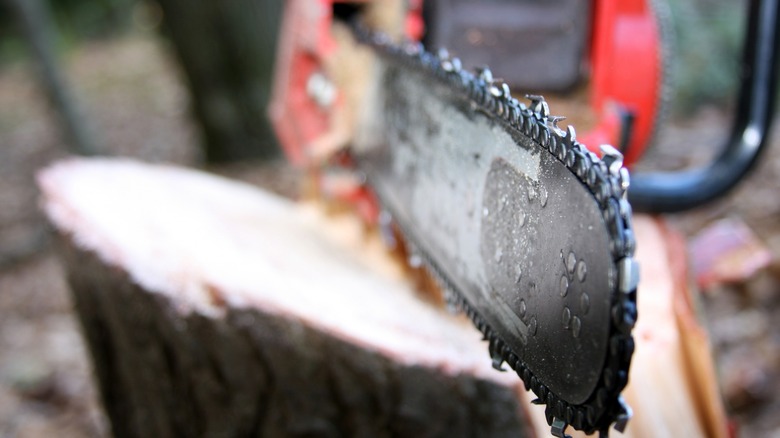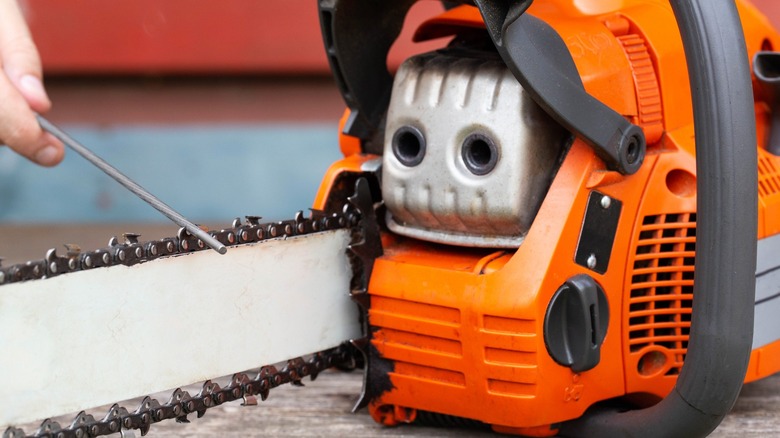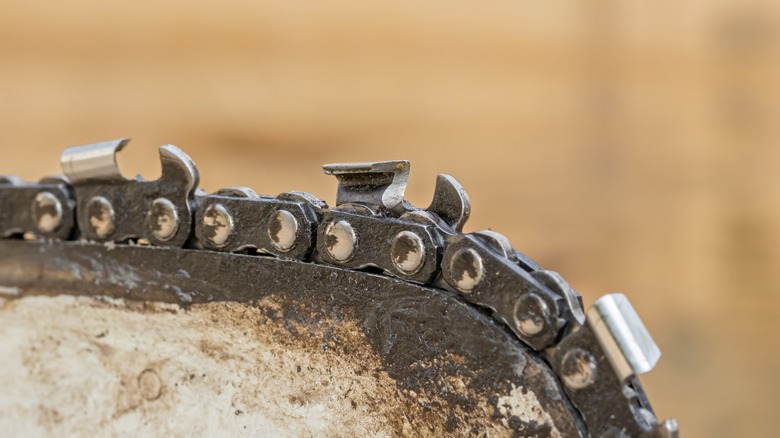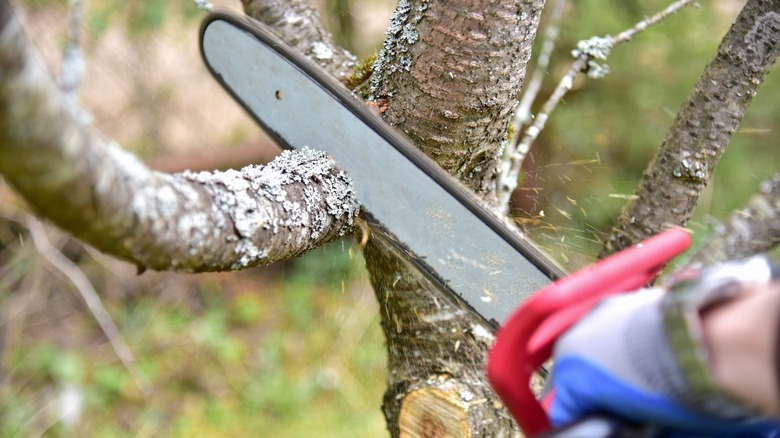How To Sharpen A Chainsaw (And What To Know Before You Start)
Whether you're working on a professional project or doing some DIY at home, improving efficiency and maximizing safety are paramount. If you've ever worked with a dull chainsaw blade, you know you're not getting the most out of your tool.
In fact, not sharpening your chainsaw blade does far more harm than you expect. With a dull blade, your chainsaw can kick back on you, risking death or life-altering injury. As with any bladed tool or device, it's important that you keep up with your chainsaw maintenance. Thankfully, sharpening your chainsaw blade can be done at home and doesn't require the intervention of a professional.
To get started, you'll need a few simple tools. These include:
- Rounded file
- File guide
- Flat file
- Depth gauge
- Protective eyewear
You can get all of these, except the eyewear, in a good chainsaw sharpening kit. To sharpen safely, you'll also need something to hold the saw in place, either a bench vise or chainsaw sharpening clamps. Before working on an electric chainsaw, either remove the battery or ensure it's unplugged. This prevents the chainsaw from unexpectedly starting while sharpening. Additionally, whenever filing metal, always wear protective eyewear to prevent injury.
How do I sharpen my chainsaw?
Your chainsaw blade is made up of two main components: the cutter and the raker. You'll start by sharpening the cutter, which is the part that actually saws through objects.
With clamp in place:
- Clean debris and residue from your blade.
- Assemble the file and file guide.
- Mark the starting cutter with a Sharpie.
- Ensure the guide markings are parallel with the saw bar.
- Firmly fit the file under a beveled cutter.
- Apply pressure and push the file forward in one stroke. Never apply pressure on the return stroke.
- Repeat two or three times, never pulling the file back against the cutter.
- Repeat steps 1 – 7 on all cutters until you return to the marked cutter.
With cutters sharpened, it's time to check the rakers. These serve as a depth guide for the cutter, ensuring the cutter doesn't go too deep, get jammed, and stall the chainsaw. If the raker is taller than the cutter, it won't actually cut at all. When you file down cutters, the raker usually needs to be adjusted as well.
To file the raker:
- Set the depth gauge across the blade so one raker is showing.
- If part of the raker protrudes above the gauge, it needs to be filed.
- Apply pressure with the flat file and push away from you.
- Repeat step 3 until the raker is below the gauge.
If you continue to have performance problems after sharpening, you may need to replace your chainsaw chain.
How do I know if my chainsaw blade is dull?
There's nothing quite like using a brand-new chainsaw to cut through wood. The process is quick and smooth, the blade making quick work of the stump or branch without much hassle. On the other hand, a dull blade is far less fun and not as safe to work with. While you can usually see when cutters are dull or blunt, there are several other signs to watch for to ensure you never work with a dull blade.
One of the first signs is stronger vibrations from your chainsaw. It may feel like the blade is struggling to cut, causing the saw to work overtime to push through. This may cause the unit to give off more vibration than you're used to.
You also want to pay attention to how much force you have to exert. Typically, a sharpened chainsaw will pull into what you're cutting. If you have to push and if you're seeing uneven cuts, chances are your cutters need addressing.
For visual cues, watch for fine sawdust. The lack of chunkier pieces of wood left behind suggests your cutters are working too hard to get through the wood. Just as if you were manually filing through wood, this creates a very fine dust.
How do I prevent my chainsaw from getting dull quickly?
Even knowing how to sharpen your chainsaw, it's always best to be as preventative as possible. First, your choice of tool is vital: Buy a well-reviewed chainsaw from a top brand whenever possible to maximize reliability. Second, while your blade will always dull with use, you can take measures to prolong the time between sharpening sessions.
Some of the more common reasons a chainsaw blade dulls quickly include:
- Trying to cut through metal embedded in the wood
- Rakers are too tall
- Chainsaw chain is on backwards
Dirt is also a big factor in causing cutters to dull quickly. Unfortunately, most cutting is done outside, where dirt is quite abundant. If you're cutting a tree, to help minimize the debris that can degrade your blade, it's best to remove as much bark as possible. You can use an axe to chip away bark and clear debris from the cutting path. If you're cutting close to ground level, don't let the chainsaw touch the ground. This can kick up dirt and pebbles that will embed themselves in the blade and wear it down more rapidly.
In addition to keeping up with maintenance, picking a good chainsaw is vital to maximize efficiency and safety. We've ranked the major chainsaw brands from worst to best to help you out.



